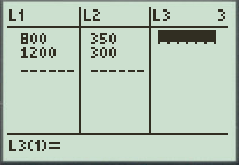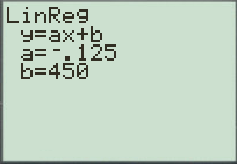
College Algebra in Context with Applications for the Managerial, Life, and Social Sciences 3rd Edition by Ronald J Harshbarger, Lisa Yocco
النسخة 3الرقم المعياري الدولي: 032157060X
College Algebra in Context with Applications for the Managerial, Life, and Social Sciences 3rd Edition by Ronald J Harshbarger, Lisa Yocco
النسخة 3الرقم المعياري الدولي: 032157060Xالخطوة 1 من4
Consider the following data:
A retail chain will buy 800 televisions if the price is $350 each and 1200 if the price is $300. A wholesaler will supply 700 of these televisions at $280 each and 1400 at $385 each.
Let us find the market equilibrium point assuming that the supply and demand functions are linear.
Convert the information in the above data into the table as follows:
| Demand Quantity | Price | Supply Quantity | Price |
| 800 | 350 | 700 | 280 |
| 1200 | 300 | 1400 | 385 |
First we create the demand function.
For this, enter the data of demand quantity and price from the table in the lists of a graphing utility.
The figure below shows a partial list of the data points.

The demand function, found using linear regression with a graphing calculator.

 Thus, the demand function is
Thus, the demand function is .
. الخطوة 2 من 4
الخطوة 3 من 4
الخطوة 4 من 4
لماذا لم يعجبك هذا التمرين؟
أخرى







